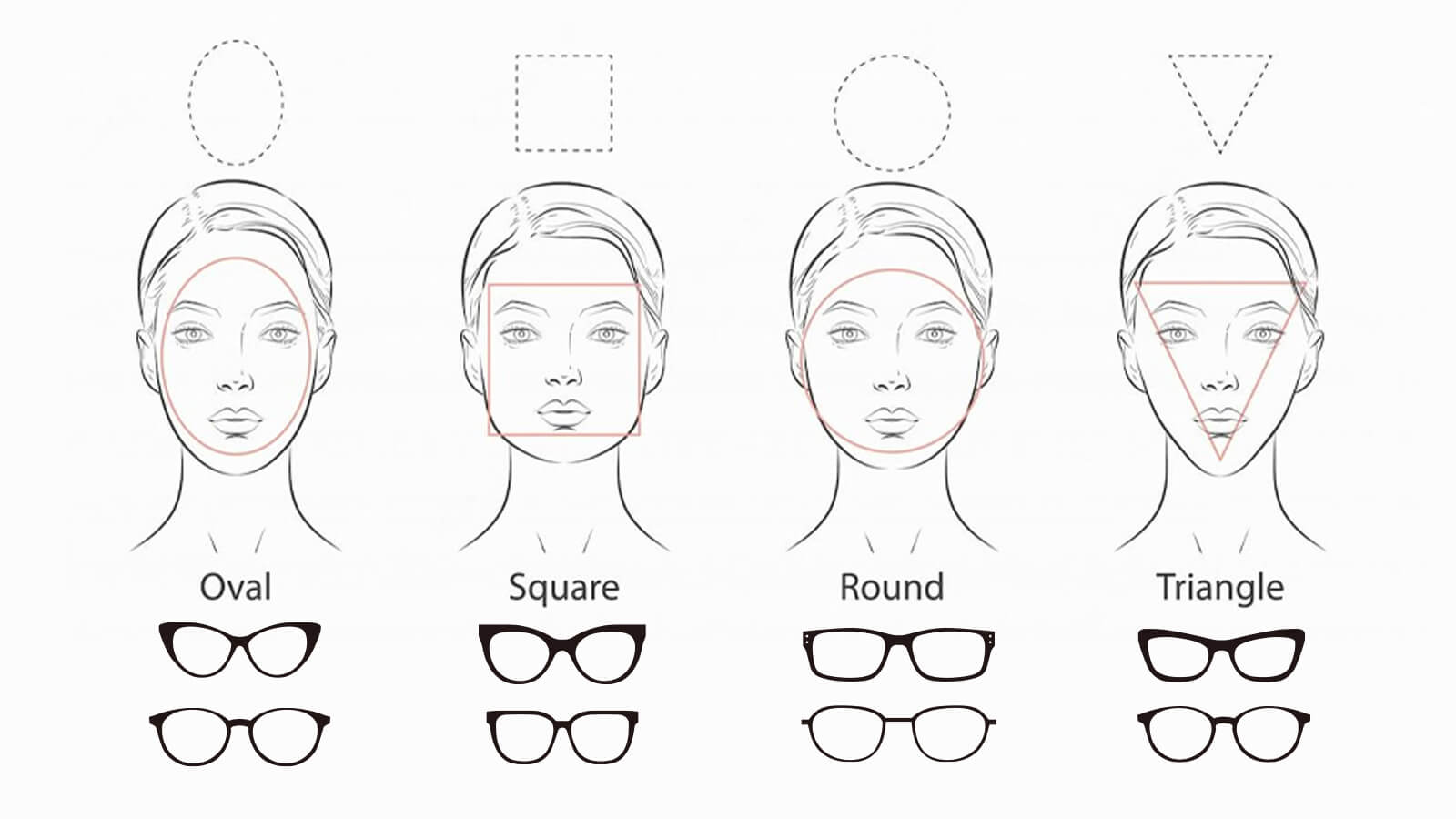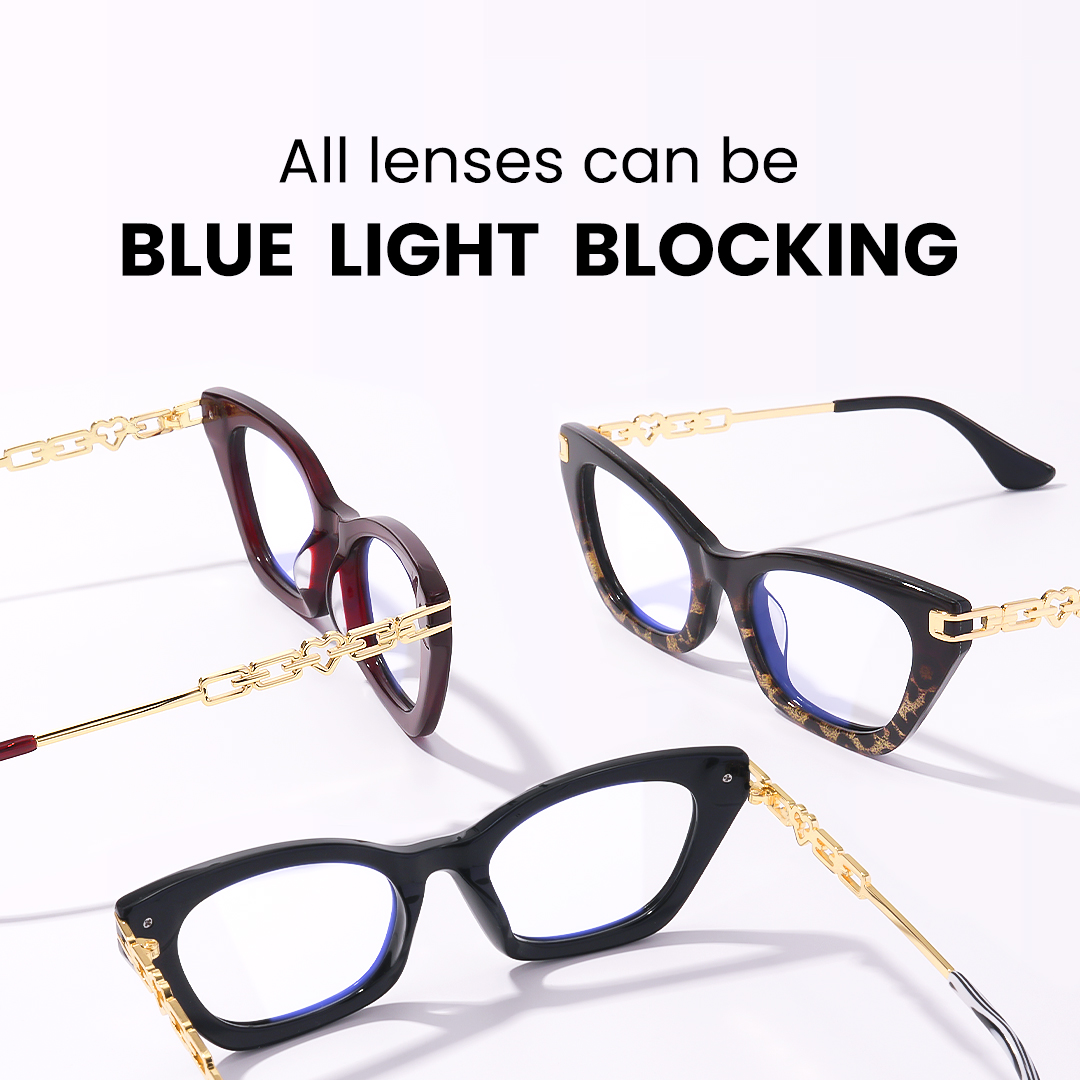
Guide to Picking Glasses That Suit Your Face Shape Perfectly
February 27,2023

What is Boho Style? A Comprehensive Guide to Boho-Chic Fashion
February 13,2025

Virtual Glasses Try On - Find Your Perfect Pair Online
April 02,2024

UV Protection Glasses VS. Blue Light Glasses - Vooglam
July 20,2023

Newest Style Modern Trendy Mens Glasses | Vooglam
March 01,2024

Stylish Reading Glasses: Blending Fashion with Functionality
February 16,2023

What are photochromic lenses & glasses?
September 22,2023

Brown Eyes: The Beauty of the Most Common Hue
September 01,2024

The chubby face glasses for round face female
August 02,2023

What are prisms in eyeglasses?
March 20,2023

What Are Bifocal Glasses? The Complete Guide (Types, History & Benefits)
April 14,2023

How to Read Your Eyeglass Prescription?
March 11,2023
Different Types of Color Blindness: What They Are and How They Affect Vision?
Color vision deficit (CVD), sometimes known as color blindness, is a visual disorder that affects a lot of people around the world. Color vision deficiency (CVD) makes it hard for certain people to tell the difference between particular hues or see colors clearly, which makes it tougher to see the world in full color. This blog will talk about the numerous kinds of color blindness, how normal color vision works, the signs and symptoms, the causes, and how it impacts daily life.
What Is Color Blindness?
People who are color blind can't see some colors correctly. Also called color vision deficiency (CVD), this happens when the cones in the retina can't see particular wavelengths of light, which changes how colors look. A lot of people use the phrase "color blindness," but it's not quite right because most people with the illness can still see some colors. Instead, individuals have trouble telling some colors apart, especially reds, greens, and blues.
Color blindness is very common, especially in men. About 8% of males and less than 1% of women around the world have some kind of CVD. The X chromosome commonly passes on the illness, however it can also be gotten in other ways.
How Normal Color Vision Works
First, let's look at how normal color vision works so we can grasp how color blindness affects eyesight. There are specific cells in the retina of the human eye called cones that are responsible for seeing color. There are three varieties of cones, and each one is sensitive to a particular spectrum of light wavelengths:
● Red cones are sensitive to longer wavelengths of light.
● Green cones respond to medium wavelengths.
● Blue cones, which detect shorter wavelengths.
These cones work together to process the many wavelengths of light that come into the eye and transfer the information to the brain. This lets us see the complete range of colors. People who are color blind have one or more of these cones that are missing or not working right, which makes it hard for them to see some colors accurately. For instance, a person who is red-green color blind may have trouble telling the difference between red and green colors because of a malfunction with the red or green cones.
The Main Types of Color Blindness
Color blindness can be categorized into several types, with red-green color blindness being the most common. Let’s take a deeper look at the different types of color blindness and how they affect vision.
A. Red-Green Color Blindness (Most Common)
Red-green color blindness is the most common type of color vision loss, and it affects millions of people around the world. People with this kind of color blindness have a hard time telling the difference between different colors of red and green. It happens when the red-sensitive or green-sensitive cones in the retina don't work well.
There are two basic types of red-green color blindness:
Protanomaly and Protanopia
Protanomaly is a type of red-green color blindness where individuals have a reduced sensitivity to red light. As a result, red hues may appear darker or less vivid, and red and green colors can appear similar, especially in low-light conditions.
In protanopia, the red cones in the retina are absent or nonfunctional. Individuals with this form of color blindness are unable to perceive red wavelengths at all, leading to significant difficulty distinguishing red from green.
Deuteranomaly and Deuteranopia
Deuteranomaly is another form of red-green color blindness, where the green cones in the retina are not as sensitive as they should be. People with deuteranomaly may find it difficult to distinguish between greens and reds, particularly when these colors are muted or desaturated.
Deuteranopia is a more severe form, where the green cones are completely absent. Individuals with deuteranopia struggle to perceive the full spectrum of green hues, making it difficult to differentiate green from red.
B. Blue-Yellow Color Blindness
Blue-yellow color blindness is less frequent than red-green color blindness, yet it still affects a lot of people. This kind of color blindness happens when the cones that are sensitive to blue and yellow light don't work well.
The two main types of blue-yellow color blindness are:
Tritanomaly and Tritanopia
Tritanomaly is a condition where individuals have a reduced sensitivity to blue light, making it difficult to differentiate between blue and green colors, as well as blue and purple.
Tritanopia, on the other hand, is a more severe condition where the blue cones in the retina are absent. This leads to an inability to perceive blue hues properly, and blue may appear as green or gray.
Unlike red-green color blindness, blue-yellow color blindness is usually not inherited but can be caused by other factors such as aging or eye trauma.
C. Complete Color Blindness (Achromatopsia)
People with achromatopsia, or total color blindness, see the world in shades of gray. This is an uncommon and serious type of color blindness. This condition happens when the retina doesn't have any of the three types of cones or they don't work. As a result, patients with achromatopsia cannot sense any color and only view the world in black and white.
People with achromatopsia often have other vision problems, like being sensitive to light (photophobia) and not being able to see clearly. This disorder is quite rare and is usually passed down in an autosomal recessive way.
What Causes Color Blindness?
People might get color blindness from their parents or from themselves. The X chromosome is most often associated to hereditary versions of the illness, which is why it is more common in men. Women have two X chromosomes, thus they are less likely to get two bad genes. Men only have one X chromosome.
Color blindness that runs in families is passed on from parents to children. If a woman has a bad gene, her boys may get the illness from her.
Aging, eye injuries, and medical disorders including diabetes, glaucoma, and macular degeneration can all cause people to become color blind. In certain situations, problems with the retina or other elements of the eye might cause color vision problems.
Signs and Symptoms of Color Blindness
The signs and symptoms of color blindness can vary depending on the type and severity of the condition. Common signs include:
● Difficulty distinguishing between red and green or blue and yellow hues
● Poor coordination in choosing colors for clothing or artwork
● Trouble reading color-coded charts, maps, or diagrams
● Children struggling with color-based learning materials
People with color blindness may also experience challenges in tasks that rely on color differentiation, such as interpreting traffic lights or identifying warning signs.
How to Test for Color Vision Deficiency
There are a number of ways to test for color blindness, and they are all rather straightforward. The Ishihara test, which is the most common one, has a number of plates with colored dots on them that are placed in patterns to make numbers or shapes. People who can see colors normally can read the numerals, but people who can't see colors may not be able to see them well.
There are various tests and online tools that can be used to check color vision, such as the Farnsworth-Munsell 100 Hue Test and the Ishihara test. If you think you could be color blind, you should see an eye doctor for a professional diagnosis.
Living with Color Blindness
While there is no cure for color blindness, there are several tools and strategies that can help individuals manage the condition. People with color blindness can benefit from the following:
● Color Labeling Apps and Accessible Design: Mobile apps that help identify colors or offer descriptions of colors can assist in daily tasks. Accessible design principles in products and websites also support those with color blindness by ensuring clear contrast and color combinations.
● Glasses That Enhance Color Perception: There are special eyewear options, like EnChroma glasses, designed to help individuals with color vision deficiencies differentiate between specific colors more easily. These glasses use filters to enhance the perception of certain hues.
● Career Implications: Color blindness can have an impact on certain professions, especially those that rely heavily on color differentiation, such as piloting, electrical work, and graphic design. However, with the right tools and accommodations, individuals with color blindness can still pursue many careers.
Conclusion
Millions of people throughout the world have color blindness, often known as color vision insufficiency. It happens when the cones in the retina don't work right, making it hard to tell some colors apart. The most frequent type of color blindness is red-green color blindness, although there are other types as well, such as blue-yellow color blindness and total color blindness (achromatopsia). People who are color blind can't be cured, but they can use different tools and technology to assist them deal with the problem and live happy lives.

Vooglam Blog
Vooglam blog shares professional knowledge about eyeglass frames, lenses, etc., and provides help when purchasing and using eyewear products. At the same time, Vooglam focuses on fashion glasses to interpret the trend of glasses for you.

From Mocha Mousse to Cloud Dancer: The "Soft Power" Palette of 2025-2026
The fashion world is currently taking a deep breath. After years of neon dopamine dressing and chaotic prints, the collective mood is shifting toward something quieter, yet infinitely more powerful. W
December 26,2025
The Science of Polarized Lenses: How They Improve Clarity and Safety in Snowy Conditions
If you've ever been out on a sunny day in the snow, chances are you know all about snow glare. That painful, sometimes blinding reflection off the bright white of snow isn't just annoying; it can be e
November 26,2025
Don't Spook Your Style: 6 Iconic Halloween Costumes with Glasses
Halloween isn't just about jumping into someone else's skin for a night—it's about finding pieces of yourself you didn't know existed. For those of us who wear glasses daily, the question isn't whethe
October 16,2025
How to Fix a Metal Glasses Arm Hinge: A Step-by-Step Repair Guide
Why Hinge Repairs Are Common—and FixableIf you wear glasses daily, chances are you've dealt with issues related to the hinges on your metal frames. It's one of the most common weak points, and over ti
July 07,2025






































